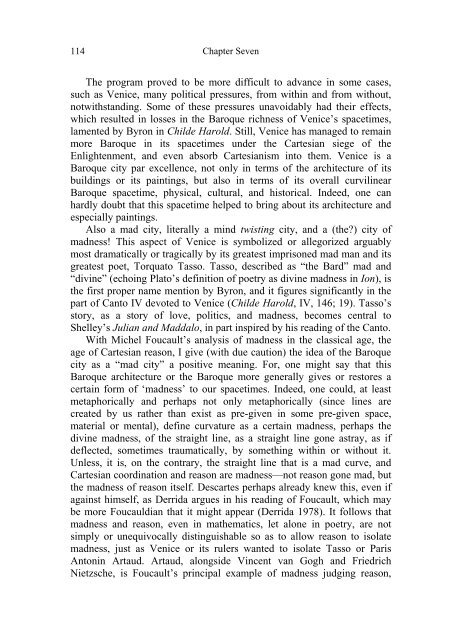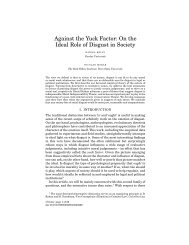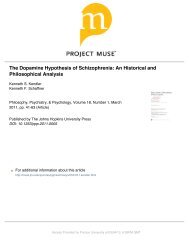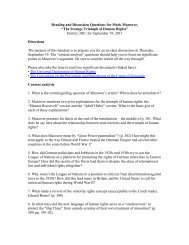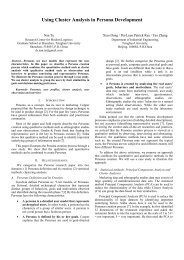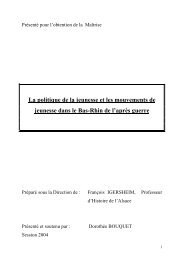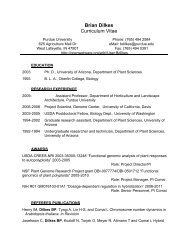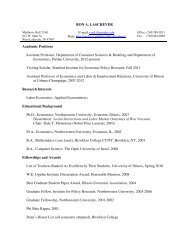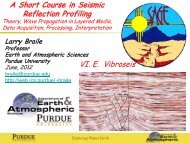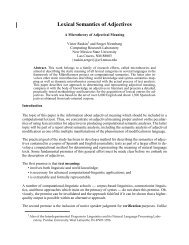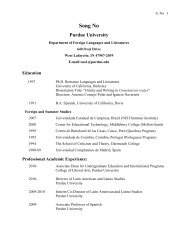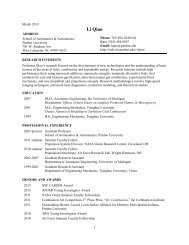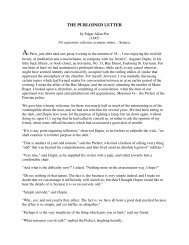'a palace and a prison on each hand': venice between madness and ...
'a palace and a prison on each hand': venice between madness and ...
'a palace and a prison on each hand': venice between madness and ...
Create successful ePaper yourself
Turn your PDF publications into a flip-book with our unique Google optimized e-Paper software.
114<br />
Chapter Seven<br />
The program proved to be more difficult to advance in some cases,<br />
such as Venice, many political pressures, from within <str<strong>on</strong>g>and</str<strong>on</strong>g> from without,<br />
notwithst<str<strong>on</strong>g>and</str<strong>on</strong>g>ing. Some of these pressures unavoidably had their effects,<br />
which resulted in losses in the Baroque richness of Venice’s spacetimes,<br />
lamented by Byr<strong>on</strong> in Childe Harold. Still, Venice has managed to remain<br />
more Baroque in its spacetimes under the Cartesian siege of the<br />
Enlightenment, <str<strong>on</strong>g>and</str<strong>on</strong>g> even absorb Cartesianism into them. Venice is a<br />
Baroque city par excellence, not <strong>on</strong>ly in terms of the architecture of its<br />
buildings or its paintings, but also in terms of its overall curvilinear<br />
Baroque spacetime, physical, cultural, <str<strong>on</strong>g>and</str<strong>on</strong>g> historical. Indeed, <strong>on</strong>e can<br />
hardly doubt that this spacetime helped to bring about its architecture <str<strong>on</strong>g>and</str<strong>on</strong>g><br />
especially paintings.<br />
Also a mad city, literally a mind twisting city, <str<strong>on</strong>g>and</str<strong>on</strong>g> a (the?) city of<br />
<strong>madness</strong>! This aspect of Venice is symbolized or allegorized arguably<br />
most dramatically or tragically by its greatest im<str<strong>on</strong>g>pris<strong>on</strong></str<strong>on</strong>g>ed mad man <str<strong>on</strong>g>and</str<strong>on</strong>g> its<br />
greatest poet, Torquato Tasso. Tasso, described as “the Bard” mad <str<strong>on</strong>g>and</str<strong>on</strong>g><br />
“divine” (echoing Plato’s definiti<strong>on</strong> of poetry as divine <strong>madness</strong> in I<strong>on</strong>), is<br />
the first proper name menti<strong>on</strong> by Byr<strong>on</strong>, <str<strong>on</strong>g>and</str<strong>on</strong>g> it figures significantly in the<br />
part of Canto IV devoted to Venice (Childe Harold, IV, 146; 19). Tasso’s<br />
story, as a story of love, politics, <str<strong>on</strong>g>and</str<strong>on</strong>g> <strong>madness</strong>, becomes central to<br />
Shelley’s Julian <str<strong>on</strong>g>and</str<strong>on</strong>g> Maddalo, in part inspired by his reading of the Canto.<br />
With Michel Foucault’s analysis of <strong>madness</strong> in the classical age, the<br />
age of Cartesian reas<strong>on</strong>, I give (with due cauti<strong>on</strong>) the idea of the Baroque<br />
city as a “mad city” a positive meaning. For, <strong>on</strong>e might say that this<br />
Baroque architecture or the Baroque more generally gives or restores a<br />
certain form of ‘<strong>madness</strong>’ to our spacetimes. Indeed, <strong>on</strong>e could, at least<br />
metaphorically <str<strong>on</strong>g>and</str<strong>on</strong>g> perhaps not <strong>on</strong>ly metaphorically (since lines are<br />
created by us rather than exist as pre-given in some pre-given space,<br />
material or mental), define curvature as a certain <strong>madness</strong>, perhaps the<br />
divine <strong>madness</strong>, of the straight line, as a straight line g<strong>on</strong>e astray, as if<br />
deflected, sometimes traumatically, by something within or without it.<br />
Unless, it is, <strong>on</strong> the c<strong>on</strong>trary, the straight line that is a mad curve, <str<strong>on</strong>g>and</str<strong>on</strong>g><br />
Cartesian coordinati<strong>on</strong> <str<strong>on</strong>g>and</str<strong>on</strong>g> reas<strong>on</strong> are <strong>madness</strong>—not reas<strong>on</strong> g<strong>on</strong>e mad, but<br />
the <strong>madness</strong> of reas<strong>on</strong> itself. Descartes perhaps already knew this, even if<br />
against himself, as Derrida argues in his reading of Foucault, which may<br />
be more Foucauldian that it might appear (Derrida 1978). It follows that<br />
<strong>madness</strong> <str<strong>on</strong>g>and</str<strong>on</strong>g> reas<strong>on</strong>, even in mathematics, let al<strong>on</strong>e in poetry, are not<br />
simply or unequivocally distinguishable so as to allow reas<strong>on</strong> to isolate<br />
<strong>madness</strong>, just as Venice or its rulers wanted to isolate Tasso or Paris<br />
Ant<strong>on</strong>in Artaud. Artaud, al<strong>on</strong>gside Vincent van Gogh <str<strong>on</strong>g>and</str<strong>on</strong>g> Friedrich<br />
Nietzsche, is Foucault’s principal example of <strong>madness</strong> judging reas<strong>on</strong>,


